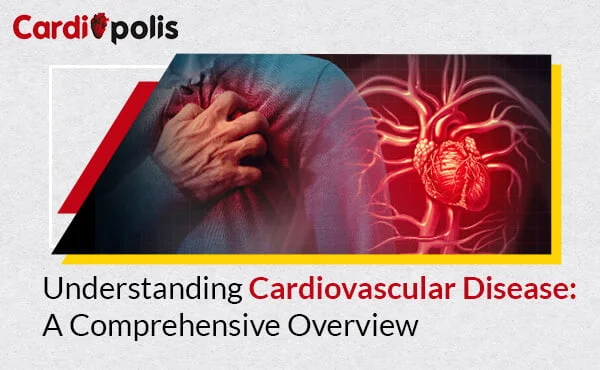
Cardiovascular disease, a broad term encompassing conditions that affect the heart and blood vessels, remains a leading cause of morbidity and mortality worldwide. In this comprehensive guide, we explore the complexities of cardiovascular disease, providing readers with a thorough understanding of its types, risk factors, and preventative measures for maintaining heart health.
The Scope of Cardiovascular Disease:
- Coronary Artery Disease (CAD): A common form characterized by the formation of plaque in coronary arteries, restricting blood flow to the heart.
- Heart Failure: This occurs when the heart cannot pump blood effectively, leading to inadequate oxygen supply to the body’s tissues.
- Arrhythmias: Irregular heart rhythms may result in palpitations(heartburn), dizziness, or even fainting.
- Valvular Heart Disease: Involves damage to or dysfunction of heart valves, affecting blood flow within the heart.
- Peripheral Artery Disease (PAD): It affects blood vessels outside the heart and brain, commonly affecting the legs.
Risk Factors and Contributors:
- Unhealthy Diet: Diets high in saturated fats, cholesterol, and sodium contribute to the development of cardiovascular disease.
- Physical Inactivity: Sedentary lifestyles are linked to obesity and high blood pressure, increasing the risk of heart-related conditions.
- Smoking and Tobacco Use: A major risk factor is that smoking damages blood vessels and can lead to the development of atherosclerosis.
- Hypertension: High blood pressure strains the heart and blood vessels, increasing susceptibility to cardiovascular diseases.
- Diabetes: Individuals with diabetes have a higher risk of developing heart-related complications.
- Genetics: Family history plays a role, as certain genetic factors may expose individuals to cardiovascular diseases.
Signs and Symptoms:
- Chest Pain or Discomfort: Often a symptom of reduced blood flow to the heart muscle.
- Shortness of Breath: Difficulty breathing may indicate heart failure or other cardiovascular issues.
- Fatigue: Persistent tiredness, especially during physical activity, can signal heart problems.
- Swelling: Fluid retention, leading to swelling in the legs, ankles, or abdomen.
Preventive Measures and Lifestyle Choices:
- Heart-Healthy Diet: Emphasize a diet rich in fruits, vegetables, lean proteins, and whole grains to support cardiovascular health.
- Regular Physical Activity: Engage in aerobic exercises and strength training to promote heart health.
- Smoking Cessation: Quitting smoking significantly reduces the risk of cardiovascular disease.
- Blood Pressure and Cholesterol Management: Regular check-ups and medications, if prescribed, help manage hypertension and cholesterol levels.
- Stress Reduction: Adopt stress-reducing practices such as meditation, yoga, or mindfulness to support heart health.
The Role of Medical Intervention:
While lifestyle changes play a crucial role, medical intervention is often necessary. Medications, surgical procedures, and interventions like angioplasty or bypass surgery may be recommended based on the severity of the condition.
In conclusion, a comprehensive understanding of cardiovascular disease empowers individuals to take charge of their heart health. By recognizing risk factors, being mindful of symptoms, and adopting heart-healthy lifestyles, one can significantly reduce the likelihood of developing cardiovascular conditions.
Remember, the journey to heart health is a lifelong commitment. Regular medical check-ups, a heart-conscious lifestyle, and an active approach to risk factors can pave the way for a healthier, more resilient heart. In the pursuit of overall well-being, let this comprehensive overview be a guiding light toward a heart-healthy future.


Comments are closed